
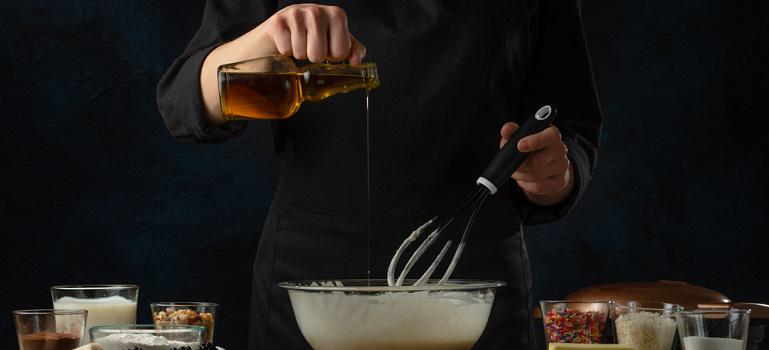

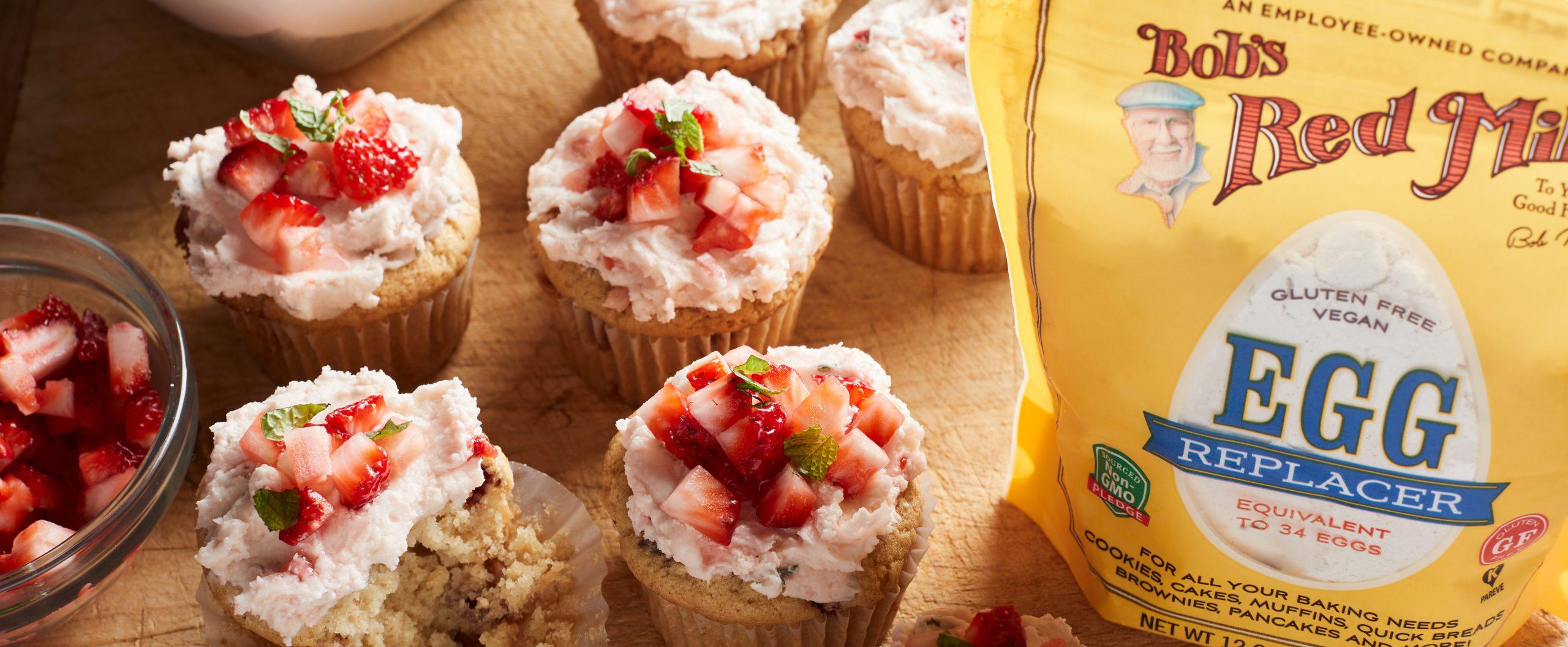 Though baking is an art, it's also a science. And while we're all for getting creative in the kitchen, when following a recipe, it's important that you follow it step by step. When making cake batter from scratch, take time to read the recipe beforehand and make sure you have all the necessary ingredients and tools. We often make small substitutes here and there based on what we have in our kitchen or our dietary restrictions. Our best advice, seek out a recipe that works with you and your ingredients and follow it. Subbing out eggs, sugar and flour may work when baking certain treats. However, when baking a cake, each piece of the recipe comes together like a puzzle, and if even one puzzle piece is slightly off, the entire cake will be changed. While you may not want to spend time and money making a trip to purchase extra ingredients, using the wrong ingredients will surely sabotage your efforts. Usually, when a cake recipe fails, it's because the recipe wasn't followed correctly. If you're eager to make substitutions to a recipe you've previously used, try making them one by one and see how the cake turns out. If your cake holds its shape and texture when making a substitution, you can note that substitution is working.
Additionally, as important as it is to follow the recipe, it's just as crucial to use the appropriate pan. Unless it's stated that you can do so, don't substitute a 6-inch pan for a 9-inch pan or a round one for a square one. Using the recommended cake pan will help prevent overflowing, flimsy, sunken and dense cakes.
For a moist cake recipe that's easy to follow, make this Buttery Yellow Birthday Cake.
Though baking is an art, it's also a science. And while we're all for getting creative in the kitchen, when following a recipe, it's important that you follow it step by step. When making cake batter from scratch, take time to read the recipe beforehand and make sure you have all the necessary ingredients and tools. We often make small substitutes here and there based on what we have in our kitchen or our dietary restrictions. Our best advice, seek out a recipe that works with you and your ingredients and follow it. Subbing out eggs, sugar and flour may work when baking certain treats. However, when baking a cake, each piece of the recipe comes together like a puzzle, and if even one puzzle piece is slightly off, the entire cake will be changed. While you may not want to spend time and money making a trip to purchase extra ingredients, using the wrong ingredients will surely sabotage your efforts. Usually, when a cake recipe fails, it's because the recipe wasn't followed correctly. If you're eager to make substitutions to a recipe you've previously used, try making them one by one and see how the cake turns out. If your cake holds its shape and texture when making a substitution, you can note that substitution is working.
Additionally, as important as it is to follow the recipe, it's just as crucial to use the appropriate pan. Unless it's stated that you can do so, don't substitute a 6-inch pan for a 9-inch pan or a round one for a square one. Using the recommended cake pan will help prevent overflowing, flimsy, sunken and dense cakes.
For a moist cake recipe that's easy to follow, make this Buttery Yellow Birthday Cake.
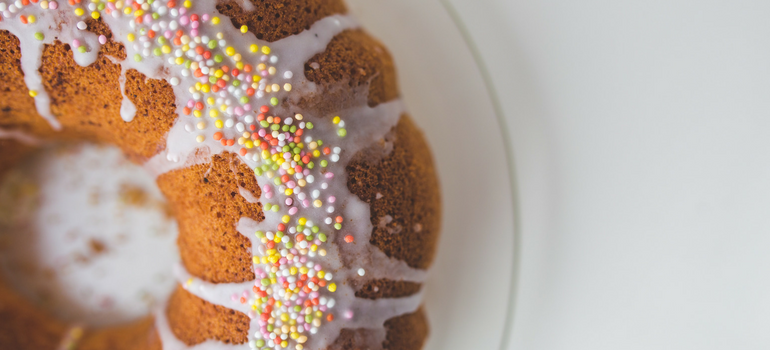 If it feels like accuracy is a theme in this article, it's because when baking a cake, accuracy is important. While measuring ingredients properly might sound like a no-brainer, it's a step where many bakers often make mistakes. The difference between a deliciously moist cake and a crumbly mess could all come down to a measurement that was slightly off. When measuring your ingredients, make sure you are using the right tools.
One of the most common issues we see is the same measuring cup being used for all ingredients. Doing this is taboo in the baking world and will result in mismeasured ingredients that lead to a cake disaster. There are specific measuring cups for dry and wet ingredients, and using each respectively will surely set you up for success.
Additionally, when measuring out flour, we suggest using the spoon and level method. Scooping flour directly from the bag will easily leave you with the wrong measurements and offset all of the recipe ingredients. Instead of scooping from the bag, use a spoon to scoop the flour into a measuring cup. Avoid packing and tapping the four. Rather, use the back of a knife to level off the top of the cup. For even more accurate results, invest in a kitchen scale. This will allow you to weigh the ingredients out to the exact amount the recipe calls for and leaves little room for error.
Searching for an easy-to-measure cake? Bake this Gluten Free Confetti Cake.
If it feels like accuracy is a theme in this article, it's because when baking a cake, accuracy is important. While measuring ingredients properly might sound like a no-brainer, it's a step where many bakers often make mistakes. The difference between a deliciously moist cake and a crumbly mess could all come down to a measurement that was slightly off. When measuring your ingredients, make sure you are using the right tools.
One of the most common issues we see is the same measuring cup being used for all ingredients. Doing this is taboo in the baking world and will result in mismeasured ingredients that lead to a cake disaster. There are specific measuring cups for dry and wet ingredients, and using each respectively will surely set you up for success.
Additionally, when measuring out flour, we suggest using the spoon and level method. Scooping flour directly from the bag will easily leave you with the wrong measurements and offset all of the recipe ingredients. Instead of scooping from the bag, use a spoon to scoop the flour into a measuring cup. Avoid packing and tapping the four. Rather, use the back of a knife to level off the top of the cup. For even more accurate results, invest in a kitchen scale. This will allow you to weigh the ingredients out to the exact amount the recipe calls for and leaves little room for error.
Searching for an easy-to-measure cake? Bake this Gluten Free Confetti Cake.
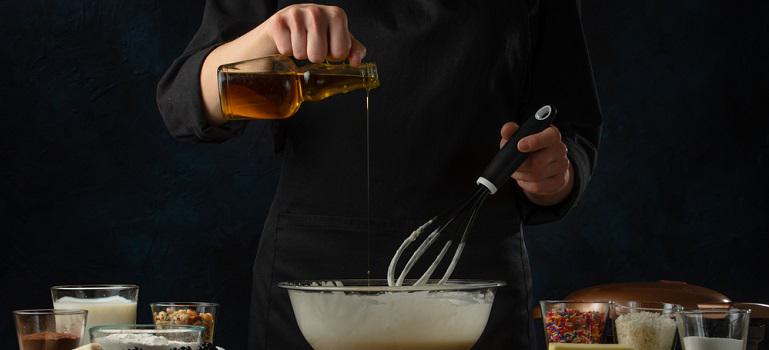 If you're working with a recipe you've baked in the past and have tried the tips above, then it may be time to switch up the recipe a bit. When baking a cake, the ratio between wet and dry ingredients will determine its moisture level. If a cake recipe has too much flour and not enough wet ingredients (butter, oil, milk), it will taste dry. On the other hand, if there's not enough flour, it won't rise properly and it will taste too wet. The next time you're dealing with a dry cake batter, add a tablespoon or two of oil to it to increase the moisture levels.
If you're working with a recipe you've baked in the past and have tried the tips above, then it may be time to switch up the recipe a bit. When baking a cake, the ratio between wet and dry ingredients will determine its moisture level. If a cake recipe has too much flour and not enough wet ingredients (butter, oil, milk), it will taste dry. On the other hand, if there's not enough flour, it won't rise properly and it will taste too wet. The next time you're dealing with a dry cake batter, add a tablespoon or two of oil to it to increase the moisture levels.
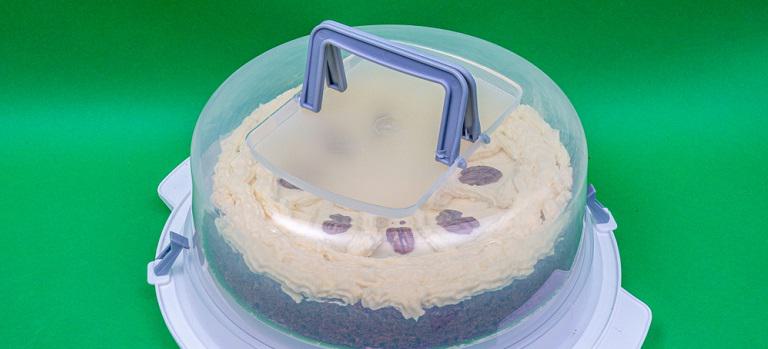 Depending on the cake you've decided to make, there will be instructions on how it tastes best. Most cakes taste best at room temperature. However, there are exceptions. Cakes topped with fresh ingredients like fruit and berries or ones filled with ice cream/mousse will need to be refrigerated until you're ready to enjoy them.
Like with most things, frosting tastes best when it is fresh. If you made the cake a day beforehand, we recommend frosting it the day of serving. Additionally, if your frosted cake has been sitting out for a few hours, cover it and place it in the refrigerator. When you're ready to eat your cake, remove it from the fridge a few hours before and let it warm to room temperature.
Are you ready to make a cake that tastes and looks great? Simply follow the cake tips above to make a moist and flavorful cake that everyone will enjoy. From following the recipe carefully to choosing the correct flour, cake baking is an art with a bit of practice every baker can master. From everyone at Bob's Red Mill, we wish you much cake baking success!
Know of a cake-baking tip that we didn't mention? Let us know what tips and tricks you use to make deliciously moist cakes in the comments below!
Depending on the cake you've decided to make, there will be instructions on how it tastes best. Most cakes taste best at room temperature. However, there are exceptions. Cakes topped with fresh ingredients like fruit and berries or ones filled with ice cream/mousse will need to be refrigerated until you're ready to enjoy them.
Like with most things, frosting tastes best when it is fresh. If you made the cake a day beforehand, we recommend frosting it the day of serving. Additionally, if your frosted cake has been sitting out for a few hours, cover it and place it in the refrigerator. When you're ready to eat your cake, remove it from the fridge a few hours before and let it warm to room temperature.
Are you ready to make a cake that tastes and looks great? Simply follow the cake tips above to make a moist and flavorful cake that everyone will enjoy. From following the recipe carefully to choosing the correct flour, cake baking is an art with a bit of practice every baker can master. From everyone at Bob's Red Mill, we wish you much cake baking success!
Know of a cake-baking tip that we didn't mention? Let us know what tips and tricks you use to make deliciously moist cakes in the comments below!